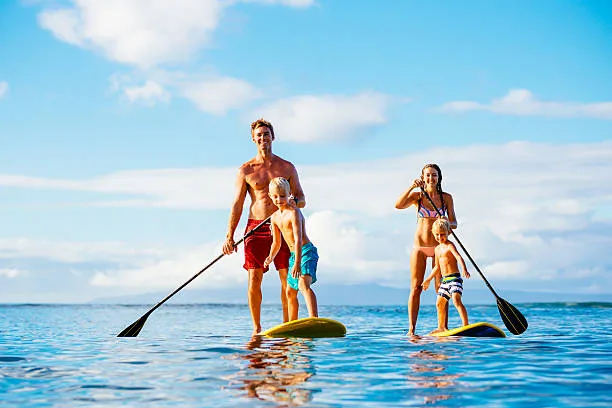Water sports are a key attraction at beach destinations, drawing in crowds looking for excitement, relaxation, and fun. From jet skiing and kayaking to paddleboarding and snorkeling, the range of activities caters to all ages and skill levels. However, successful water sports entertainment requires careful planning and coordination to ensure beachgoers’ safety, enjoyment, and satisfaction.
In this blog, we’ll explore the essential components of water sports planning for beach entertainment, discuss strategies to enhance the experience and highlight a professional course from Holistique Training that offers valuable insights into effective water sports management.
Why Water Sports Planning is Essential
Planning water sports activities is crucial for creating a memorable and safe beach experience. These activities can quickly become chaotic or even hazardous without proper organisation and management. Effective water sports planning ensures that:
- Safety Protocols are in Place: Water sports involve inherent risks, such as drowning, collisions, and injuries. To minimise these risks, a well-structured plan incorporates safety measures, including equipment checks, trained lifeguards, and emergency response protocols.
- Optimal Use of Resources: Beaches need more space and resources, such as equipment, staff, and time. Planning allows for the efficient allocation of resources, ensuring that activities run smoothly and are accessible to all visitors.
- Customer Satisfaction: By organising a variety of water sports options that cater to different interests and skill levels, beach managers can enhance the overall experience and keep guests engaged and satisfied.
Key Elements of Water Sports Planning
- Assessing Beach Conditions: Evaluating the beach environment is crucial before introducing water sports activities. Factors like wave patterns, tides, water depth, and weather conditions play a significant role in determining the safety and feasibility of specific sports. For example, calm waters are ideal for paddleboarding, while spots with waves are better suited for surfing.
- Choosing Suitable Activities: The selection of water sports should align with the beach’s characteristics and target audience. Families may prefer safe and leisurely activities like kayaking and snorkelling, while thrill-seekers might look for jet skiing or parasailing. Offering a diverse range of activities helps attract a broad spectrum of visitors.
- Training and Staff Management: Qualified staff are essential for conducting water sports safely. Instructors and lifeguards should be trained in water safety, first aid, and customer service. Proper staff management ensures that guests receive guidance on correctly using equipment and following safety protocols.
Best Practices for Managing Beach Entertainment
- Safety Comes First: Safety is the foundation of successful water sports entertainment. Conduct regular equipment checks, ensure that life vests and helmets are available and properly maintained, and establish clear guidelines for participants. Safety briefings before each activity help educate guests on proper procedures and precautions.
- Efficient Scheduling: To avoid overcrowding and ensure the best experience for all participants, create a structured schedule for each activity. Time slots can be allocated based on the demand and duration of each sport. This enhances safety and provides guests with a seamless and enjoyable experience.
- Incorporate Environmental Awareness: Promoting eco-friendly water sports practices is becoming increasingly important. Encourage non-motorized sports like kayaking and paddleboarding to minimise environmental impact. Educate visitors about marine conservation and implement rules to protect the beach and surrounding waters.
Learn Professional Water Sports Planning with Holistique Training
For beach managers and event planners looking to enhance their skills in water sports management, Holistique Training offers a comprehensive course on Water Sports Planning for Beach Entertainment. This course provides practical insights into effectively planning, organising, and managing water sports activities. It covers key topics, including safety protocols, equipment maintenance, staff training, and customer engagement.
Enrolling in this course will help participants better understand how to design an entertainment program that caters to a wide range of beachgoers while maintaining safety and environmental standards. The course is ideal for professionals in the tourism and hospitality industry seeking to elevate their beach entertainment offerings.
Conclusion
Effective water sports planning is vital to creating a vibrant and enjoyable beach environment. By assessing beach conditions, selecting suitable activities, and prioritising safety, beach managers can deliver an unforgettable experience for visitors. Incorporating best practices, such as efficient scheduling and environmental awareness, further enhances the overall success of water sports entertainment.
For those interested in mastering the art of water sports planning, the Holistique Training course provides invaluable knowledge and skills for excelling in this field. To learn more about this course and other professional development opportunities, visit the Holistique Training website.
Also read: How Can Content Marketing Assist In Establishing Trust And Authority?







